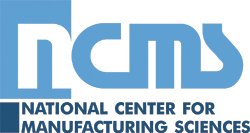Historical Articles
March, 1953 issue of Plating
QUESTION BOX
Readers’ questions of general interest
Q. 154. We are interested in obtaining a standard commercial specification for nickel chrome plating on carbon steel to be used as a mirror. In conjunction with this’ we desire one that will stand up under a salt spray test of reasonable duration.
A. We know of no specification covering nickel-chrome plating of carbon steel mirrors, nor do the authorities we have consulted.; Ordinarily, mirrors are electro formed over a polished mold and we question the advisability of nickel-chromium plating steel forms.—D. G. FOULKE.
Q. 155. Lately we have had many troubles in he chromium plating of phonograph record matrices. We checked amperage, temperature, chemical concentration of bath, etc. We eliminated impurities—by working the tank at a very low amperage with a dummy matrix but we still do not get good work. Please list the causes of incorrect chromium plating with your suggestions for correcting each condition.
A. As the trouble they are having in chromium plating phonograph record matrices is not described in detail, the best that can be done is to make a few general suggestions. Their trouble is more likely to }4 found in racking and cleaning than in the plating bath and plating conditions. It is suggested that they hare their racks insulated and use several spring contacts so that practically all the current registering on the ammeter goes to the surface to be plated. They should use a cone-shaped anode to distribute the current uniformly. They should check to be sure that they did not base their current density on the area as measured: with a rule. The actual area being plated is two or three times the measured area because of the ridges on the matrix.
It is also suggested that they check the handling and cleaning of the nickel or copper plate on the I matrix to be sure that it is not partially passive when it goes into the chromium bath. Passivity may cause a non-uniform chromium plate. If they use a hydro chloric acid dip, they should analyze the chromium bath for chloride to check on the possibility that drag-in of chloride may be one cause of the trouble.
Electrolyzing the chromium bath does not remove impurities such as iron and copper, although it does decrease the trivalent chromium content, provided the anode area is several times the cathode area.—J. M. HOSDOWICH.
 |
 |
 |
 |
 |
| Home | Subscribe | Regulations | Compliance Assistance | News | Resources | Resource Locators | Directories | Online Training | About | Search | NASF.org |
The information contained in this site is provided for your review and convenience. It
is not intended to provide legal advice with respect to any federal, state, or local regulation.
You should consult with legal counsel and appropriate authorities before interpreting any
regulations or undertaking any specific course of action.
Please note that many of the regulatory discussions on STERC refer to federal
regulations. In many cases, states or local governments have promulgated relevant rules and
standards
that are different and/or more stringent than the federal regulations. Therefore, to assure full
compliance, you should investigate and comply with all applicable federal, state and local
regulations.

